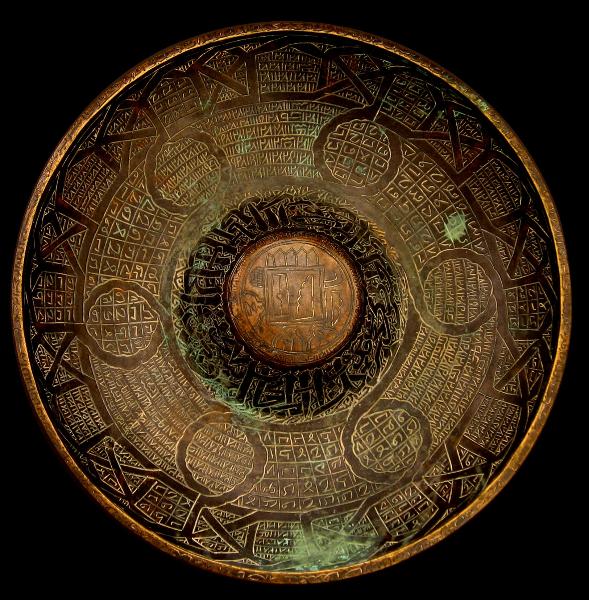
Islamic Magic Bowl
Magic Medicinal Bowl
Syria or Egypt
14th century
diameter: 22cm; height: 4cm
The relative rarity of this magnificent magic bowl derives from its great age. Its entire surface is etched with Koranic inscriptions in Arabic and talismanic symbols. The interior is etched with dozens of panels and cartouches, each filled with magic symbols and numbers. Talismanic symbols appear on the top of the raised centre. The surface of the rim is etched with Arabic that gives various names of The Prophet and requests for Allah’s blessing.
The base of the bowl is etched with a thick band of
nasta’liq script, followed by another band of script which repeats that which is on the rim.
A band of talismanic numbers contained within circles and six-pointed stars (sometimes referred to as Solomon’s seal which has magical associations) follows the prescriptive band.
The reverse of the raised centre is filled with more talismanic numbers and symbols and more script in Arabic, around a six-pointed star.
The bowl has a beautiful patina consistent with its great age.
Comparable examples are displayed in the British Museum (inventory nos: 1922 10-10.1 and OA+2603.)
Magic bowls were made at least as early as the 12th century. They were used in Islam in the treatments of disease and other ailments, including insect and snake bites. Water placed in such bowls was believed to take on curative aspects after having come into contact with the various talismanic and Koranic symbols and verses etched onto such bowls. It was then drunk by the afflicted person.
References
Savage-Smith, E., ‘Islamic magical texts vs. magical artefacts’, in
Societas Magica Newsletter
, Fall 2003.
Inventory no.: 69
SOLD


